Standing not far from Koblenz on the left bank of the Rhine river in Germany, Stolzenfels is a medieval castle constructed in the 13th century, which was later reconstructed into a palace as part of the 19th-century Gothic revival which swept across Europe.
Visiting Stolzenfels Castle On the Rhine
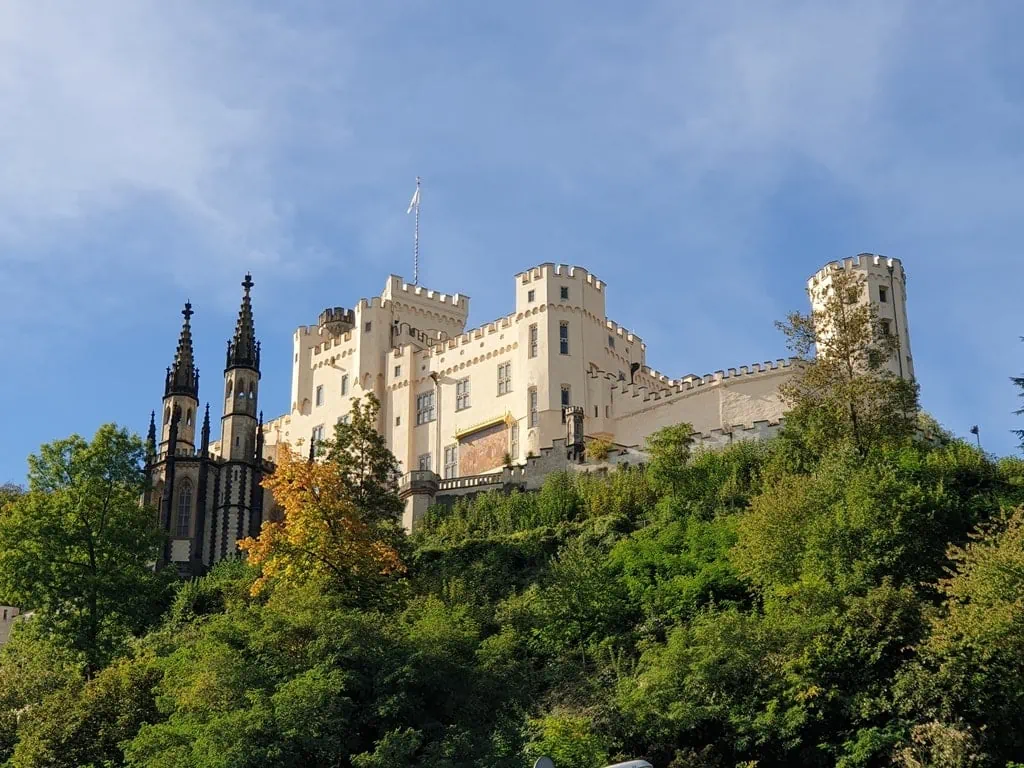
History of Stolzenfels Castle
Like many of the medieval castles which stand on the banks of the Rhine river in Germany, Stolzenfels was originally constructed in order to levy tolls on passing trade traveling by boat or by road.
It also appears that the castle was constructed as part of local power politics by Arnold II, Prince-Bishop of Trier – the Archbishop of Mainz had built his own castle at Lahneck in 1232, so it seems likely that Stolzenfels was part of Arnold of Trier’s attempt to assert his own power.
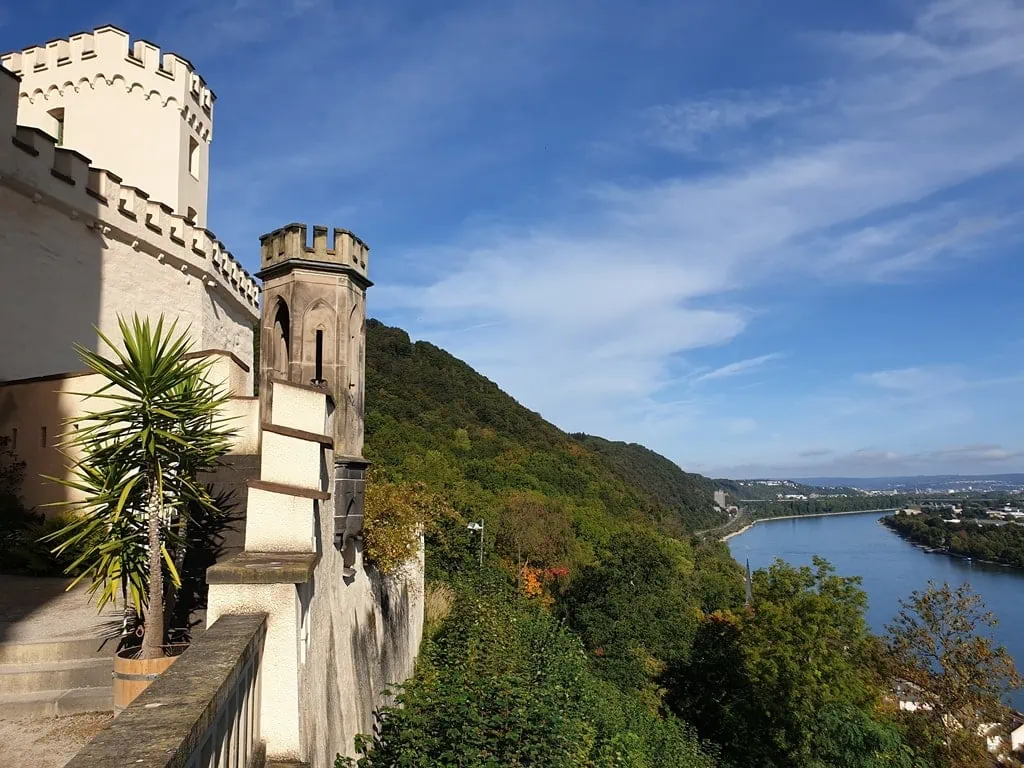
For centuries after its completion in 1259, Stolzenfels controlled the local territory for its owners, the Prince-Bishops of Trier. The castle underwent several extensions, the largest of which was constructed in the 14th century.
Stolzenfels castle also saw its fair share of military action – it was occupied by Swedish troops during the Thirty Years’ War before being destroyed by the French in 1689 as part of the Nine Years’ War. During this conflict, many other Rhine castles were destroyed to prevent them from posing a threat to French territorial ambitions.
During the 18th century, the ruins of the castle were used as a quarry before Stolzenfels underwent a dramatic revival during the 19th century.
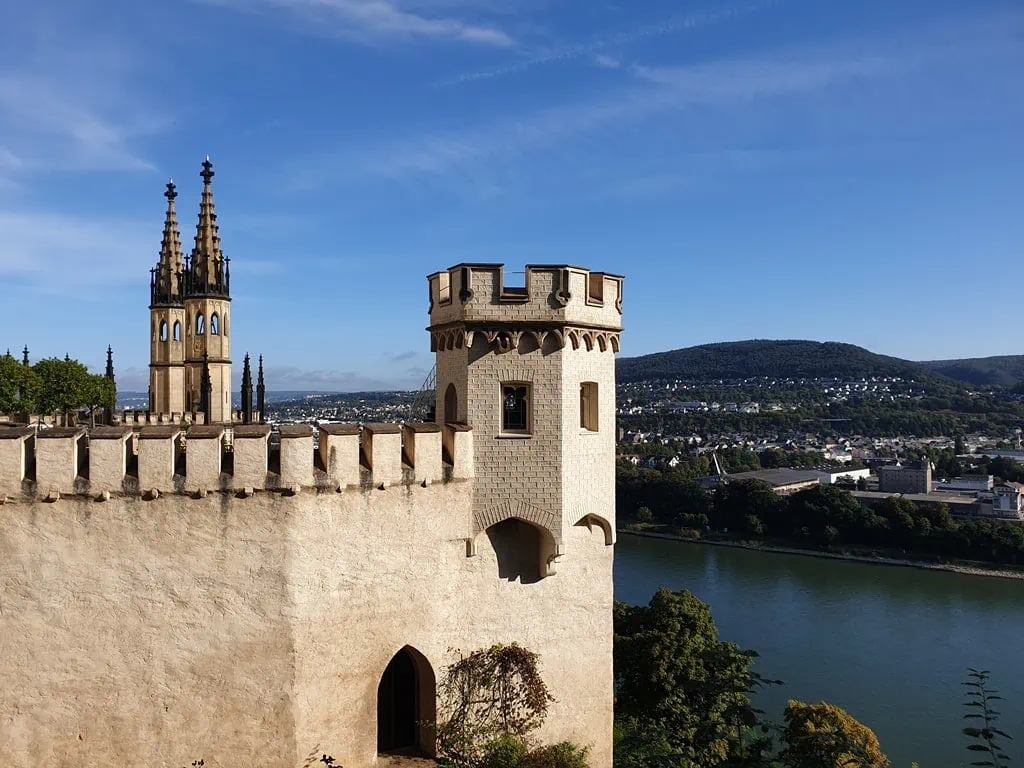
In 1802 the castle passed into the possession of the city of Koblenz before the city gifted the ruin to Frederick William IV of Prussia, the Prussian crown prince, in 1823 (the Rhineland had become a province of Prussia in 1822).
Earlier in 1815, Frederick had traveled along the Rhine and had become deeply interested in the history and beauty of the region – now, he took the opportunity to revive Stolzenfels castle in the Romantic fashion popular at the time.
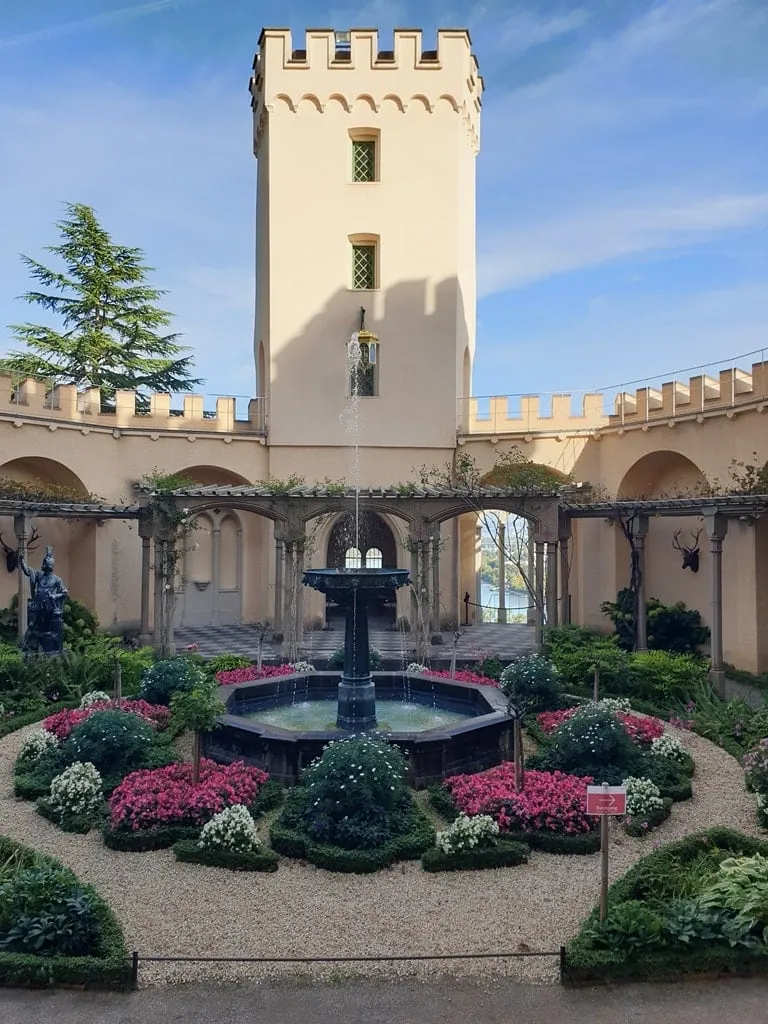
In part, Frederick was inspired by his cousin Prince Frederick William Louis’ reconstruction of nearby Rheinstein Castle, as well as the rebuilding of Hohenschwangau Castle by King Maximilian II of Bavaria.
By 1842 the main buildings and the gardens of the gothic revival palace, designed by architect Karl Friedrich Schinkel, were complete. In September, Frederick (now King of Prussia) inaugurated Stolzenfels as his summer residence with a torchlit procession.
In 1845 Queen Victoria of the United Kingdom visited Stolzenfels, and the castle chapel was inaugurated. The interiors of the castle were fully completed by 1850.

Following the First World War, ownership of the castle passed to the state, where it remained until after the Second World War. Stolzenfels then came into the possession of what is now the General Directorate for Cultural Heritage in Rhineland-Palatinate.
As of 2002, the Upper-Middle Rhine Valley, which includes Stolzenfels, is a UNESCO World Heritage Site. After a series of renovations which were completed in 2011, the castle reopened to visitors.
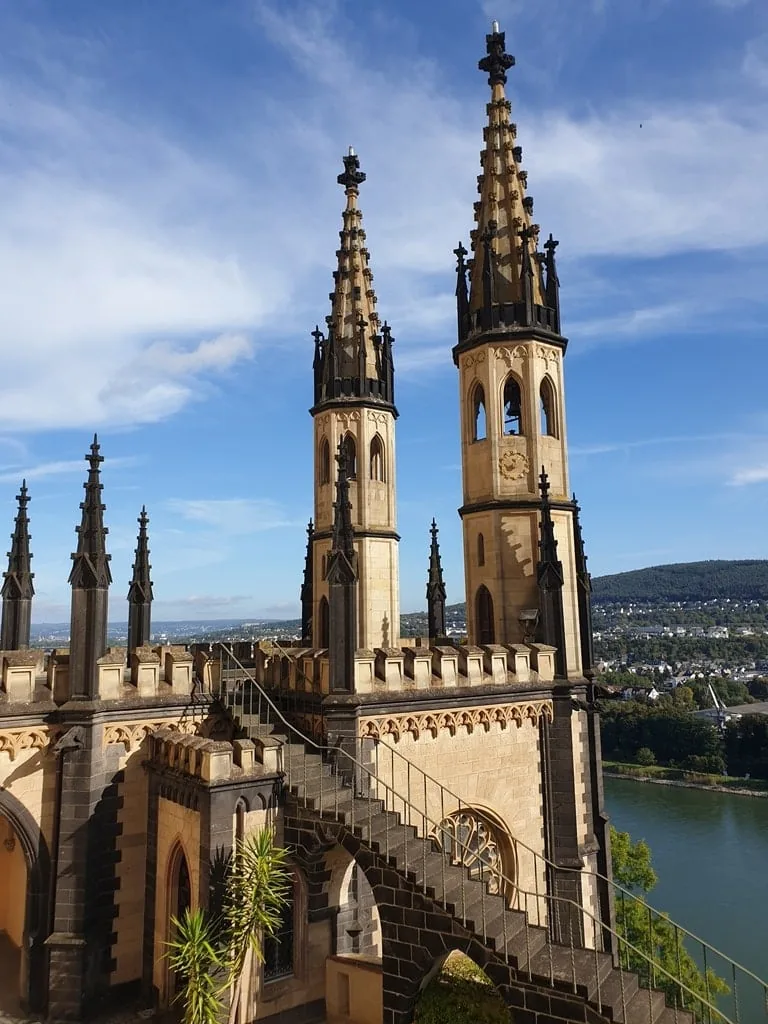
Things to see in Stolzenfels Castle

Stolzenfels is a spectacular example of mid-19th-century Rhine romanticism. The pergolas and terraces of the palace display clear Italian influences, with the large and small knight’s halls reflecting the medieval origins of the castle.
The small knight’s hall, situated in the medieval residential tower, was used as a reception room – its walls are highly decorated with frescoes depicting the history of the German Empire. Doors also lead from this hall onto a terrace on the roof of the castle chapel, where visitors can enjoy fantastic views of the beautiful Rhine valley.
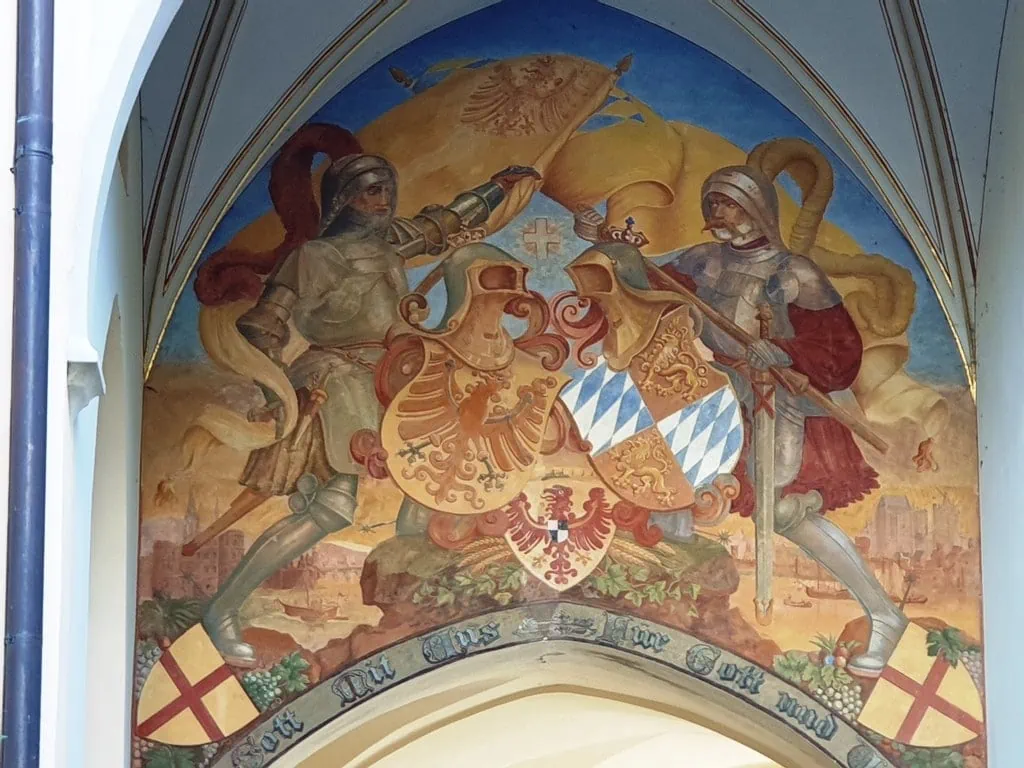
The castle also has an impressive array of gardens, with five gardens situated within the walls of the castle. The greatest of these is the Pergola Garden which sits below the windows of Frederick’s bedroom – three-aisled arcades surround the garden, creating a peaceful space at the heart of Stolzenfels featuring roses and a pergola entwined with vines.
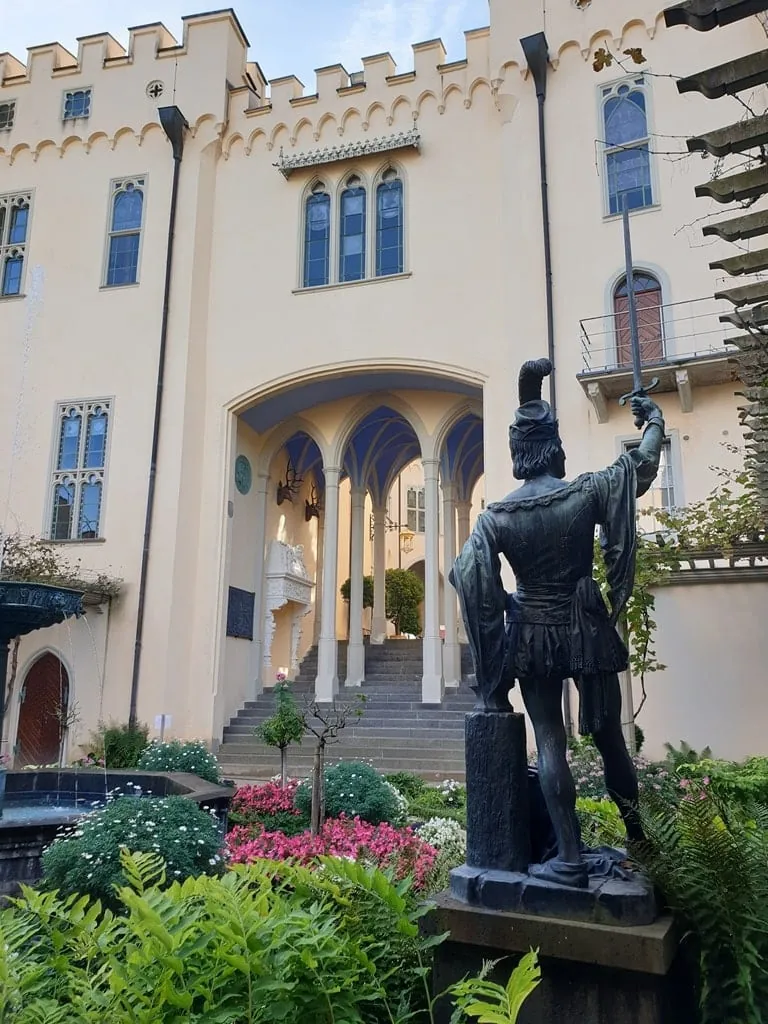
A Byzantine-style tea hall also adjoins the garden. The castle is also surrounded by a 9-hectare landscaped park designed by the Prussian Peter Joseph Lenné – the parkland includes grottoes and waterfalls, and visitors can enjoy a number of pathways that wind through the scenic landscape.
A Visitors Guide to Stolzenfels Castle
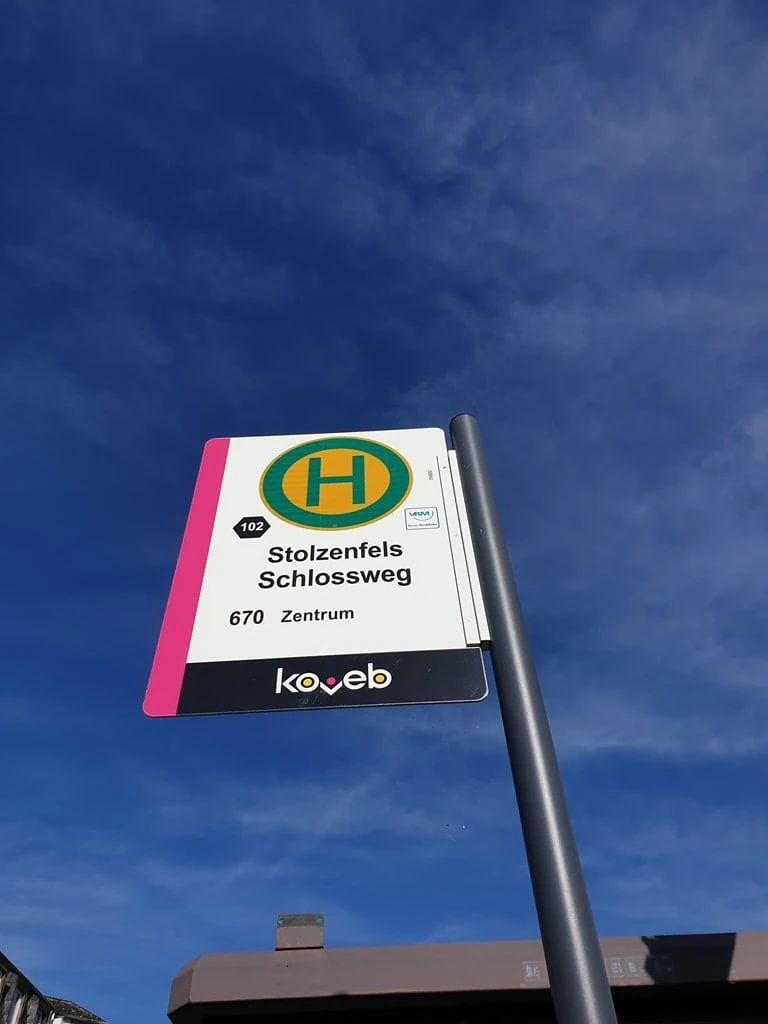
Thanks to its close proximity to Koblenz, Stolzenfels Castle is easily accessible by train or bus. Regular trains run from Koblenz station, and buses run on line 670 to the ‘Stolzenfels-Schlossweg’ stop. From the station at Stolzenfels, the walk to the castle takes around 20 minutes (timetables and travel information can be found here).
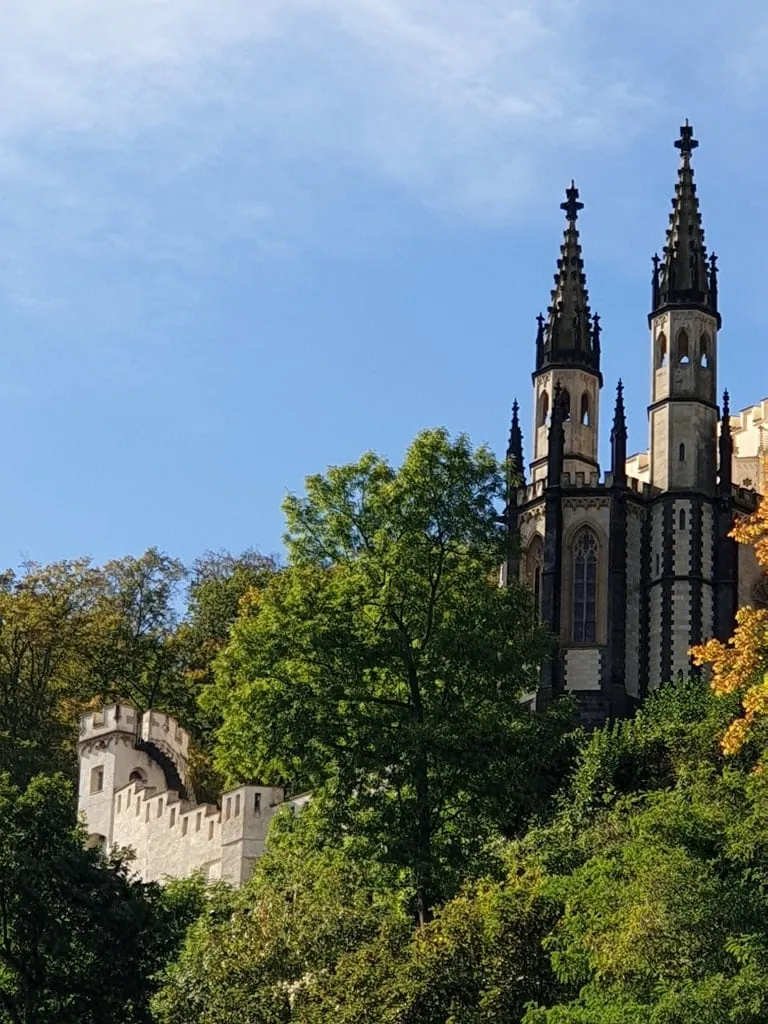
The castle can also be reached by boat from Koblenz – this journey takes around 30 minutes, and there are regular departures during the seasonal summer months (more information on boat travel can be found here).
Of course, visitors can also get to Stolzenfels castle by car: a multi-story car park sits below the medieval fortress and is free to use for visitors to the castle. A short 20-minute walk will take you from the car park up to the castle entrance.
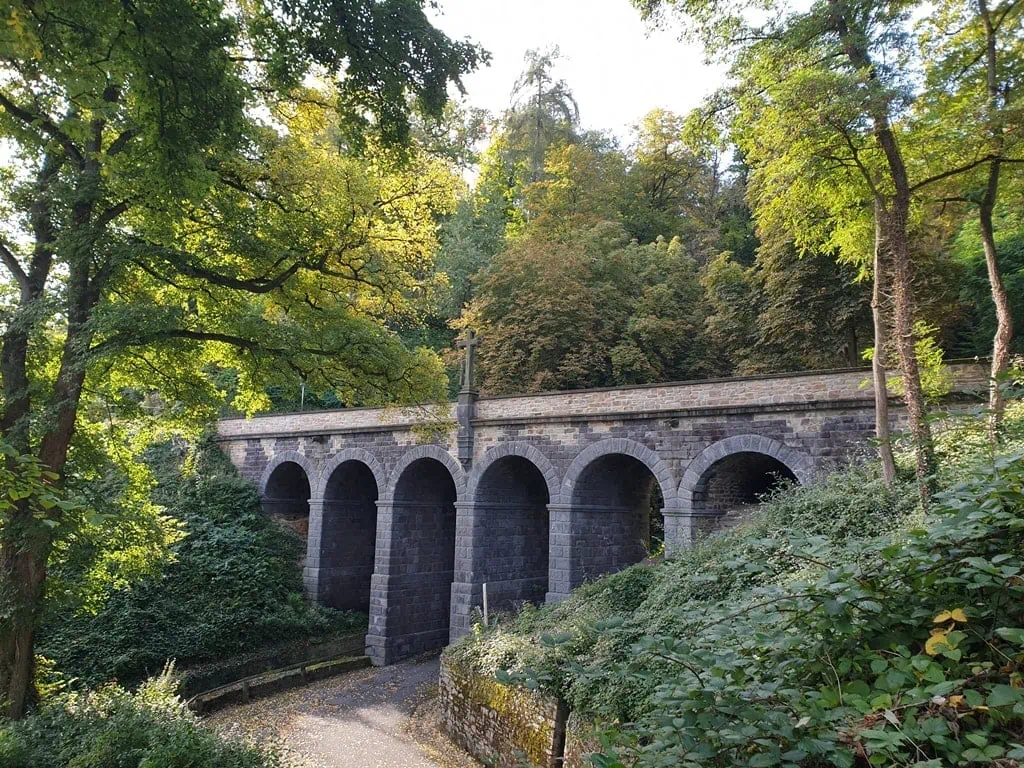
Stolzenfels is also situated along the route of the Rhine Cycle Path, making it an excellent stopping point for those who are cycling along the river. Cycle racks are conveniently located on the B9 road close to the castle itself.
During the season (March 15th – October 31st), Stolzenfels castle is open from Tuesday-Sunday every week. During the month of November, and from 1st February – 14th March, the castle is open on Saturdays, Sundays, and public holidays only.
When open, the castle can be visited between the hours of 10 am and 5 pm, with the last admissions at 4 pm.
Stolzenfels is closed in December and January.
Entrance costs €5 for adults and €3 for children and young people – family and group tickets are also available.
